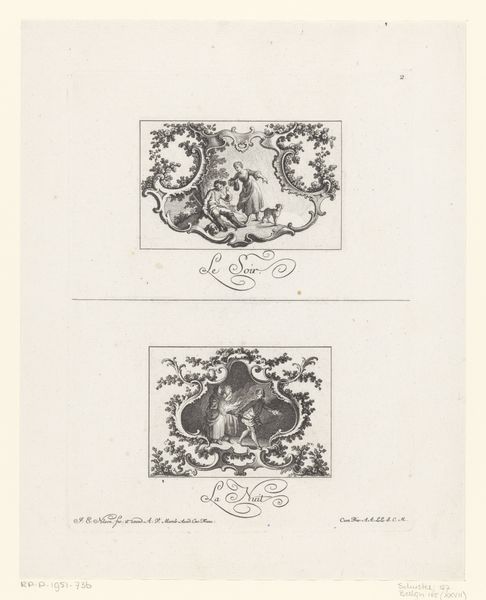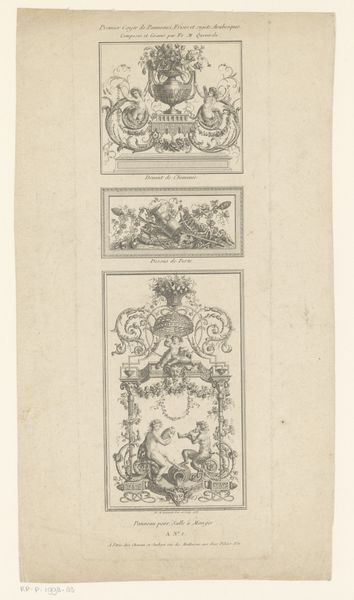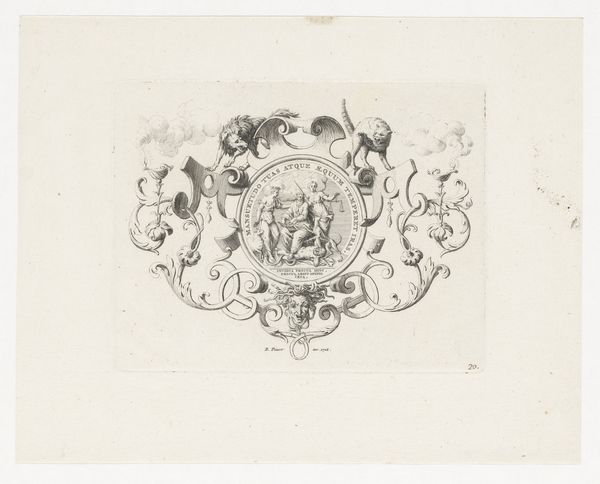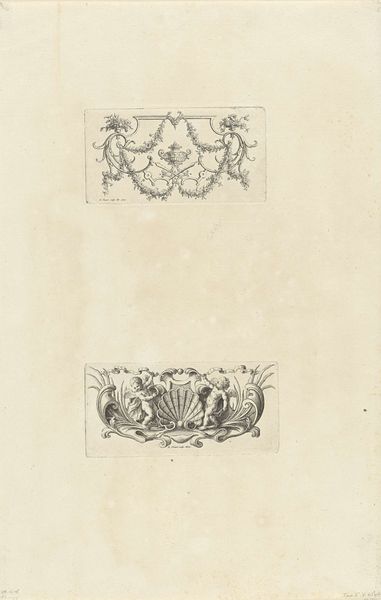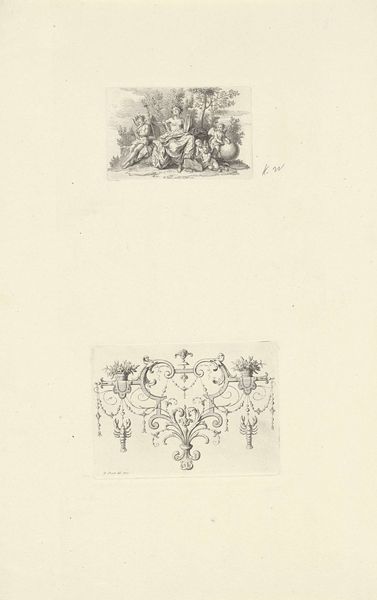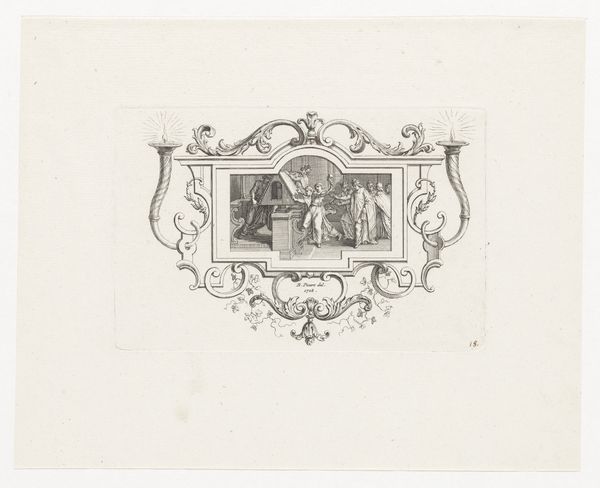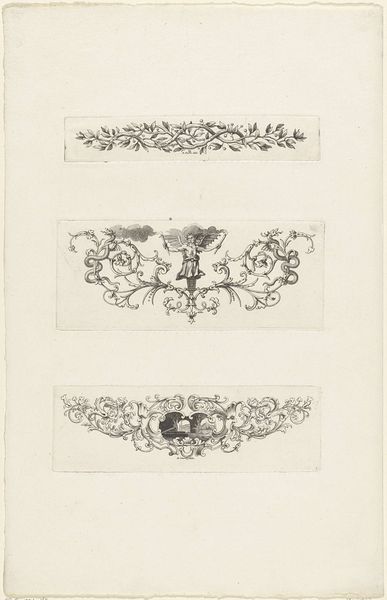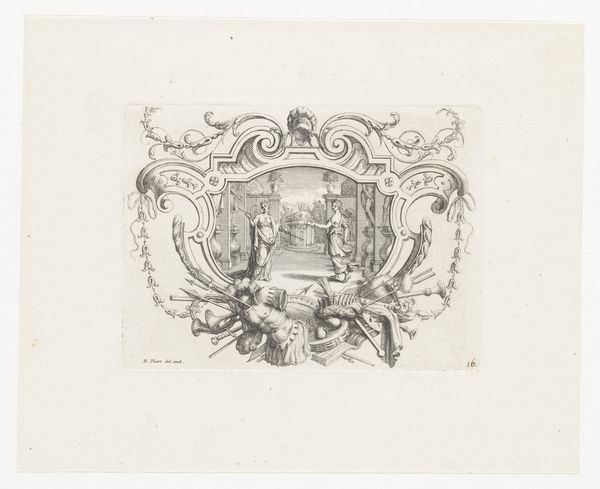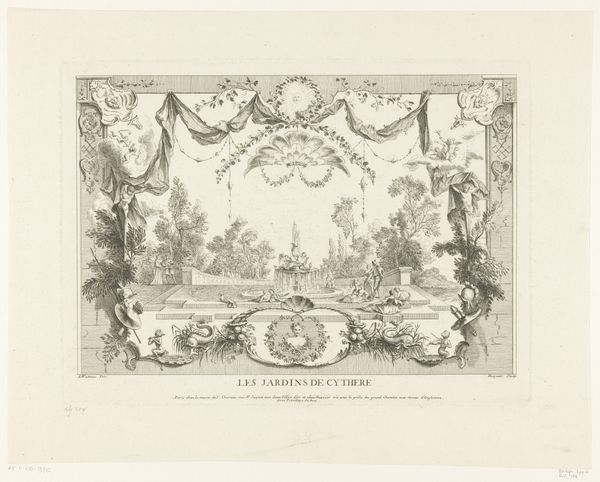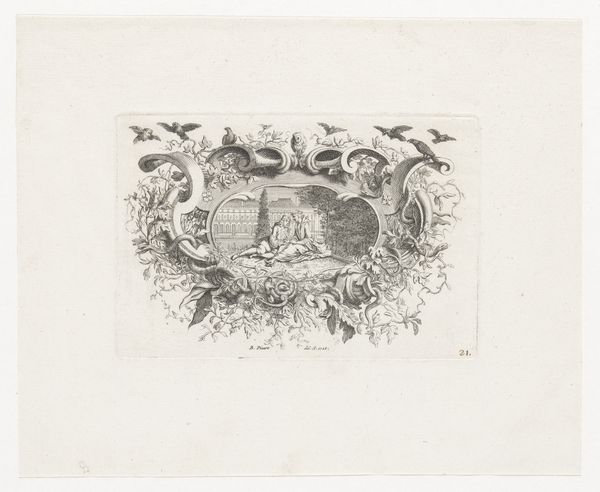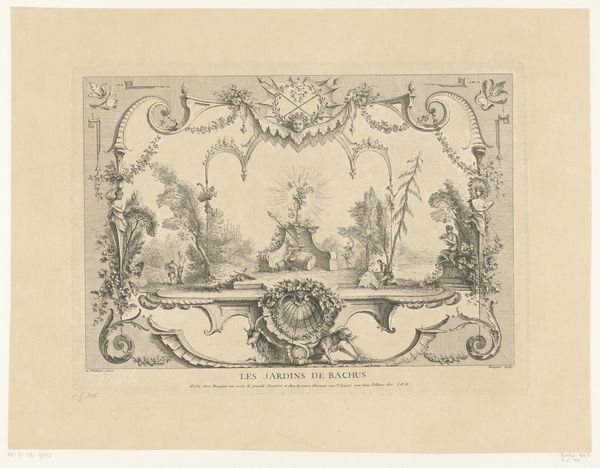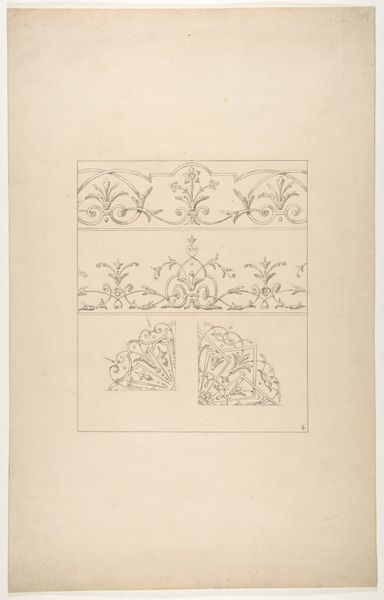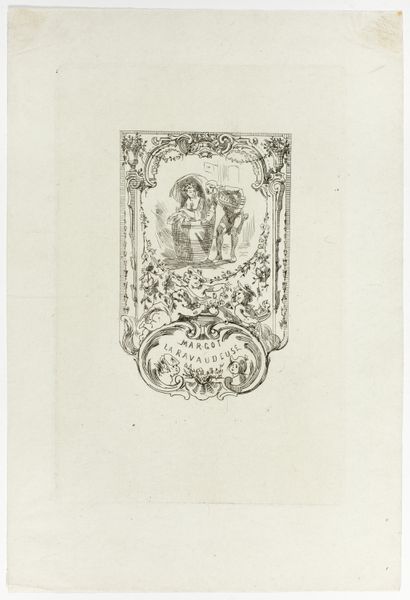
Dimensions: height 225 mm, width 165 mm
Copyright: Rijks Museum: Open Domain
Curator: Here we have "Middag en ochtend" by Johann Esaias Nilson, likely created between 1766 and 1788. It's an engraving, showcasing the artist's mastery of line and form. Editor: It strikes me as quite decorative; the intricate borders around the two vignettes almost overwhelm the scenes themselves. They are very tiny people surrounded by a large garden or natural, Eden-like setting, rendered in precise detail using, well, obviously etching or engraving techniques. I suppose that decorative element connects with Rococo's sensibility... Curator: Indeed. Nilson was a proponent of Rococo, known for its ornate style and depictions of leisure. Consider the social context: engravings like these were often reproduced and disseminated, accessible to a broad public, reflecting ideals of courtly life. It's a fascinating insight into the aesthetic tastes of the time. Editor: Absolutely, but from a craft perspective, notice how the materiality itself informs the message. The sharp, clean lines of the engraving lend a sense of order and control. It elevates, shall we say, relatively simple human tasks, and makes them into art for, ultimately, consumption. Curator: True. And it's a carefully constructed consumption. The juxtaposition of "Middag" and "Ochtend," or midday and morning, encourages a dialogue around temporality and societal rhythms. The division of labor by gender could reflect social structure: perhaps commenting on women and work or rest at midday. Editor: It also points toward production; the multiple impressions of these engravings had an important circulation in studios for learning practice in model-making for workshops, to increase the division of specialized artistic labors, no? Curator: Precisely. These prints played a crucial role in disseminating visual ideas, standardizing artistic practice, and enabling broader participation in artistic discourse. The prints allowed Nilson's aesthetic sensibilities to influence craftsmen widely. Editor: Which comes around full circle. From concept to object to impact. Thinking about process informs everything about what makes this work culturally relevant today. Curator: Agreed, by exploring both its societal imprint and production qualities, the engraving presents itself as a testament to the cultural forces at play in Nilson's era. Editor: Yes, it is a testament of both Rococo style, production practice, and a daily meditation that Nilson left for us today.
Comments
No comments
Be the first to comment and join the conversation on the ultimate creative platform.
